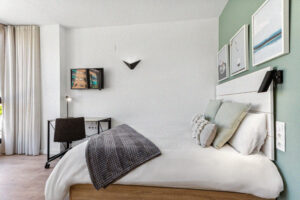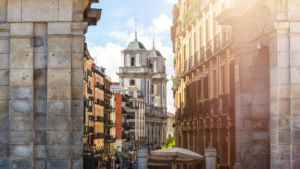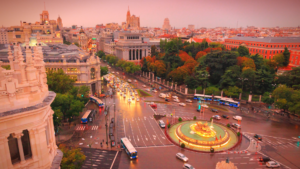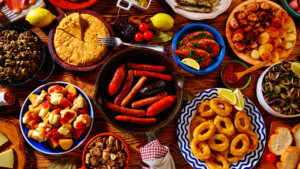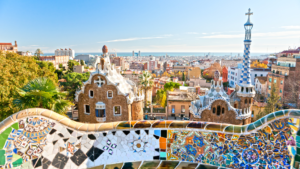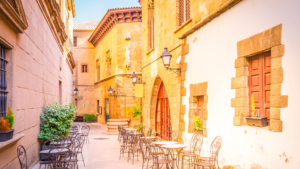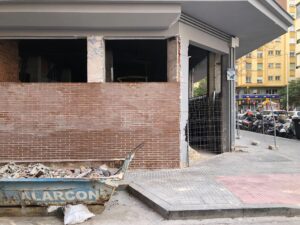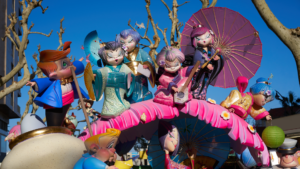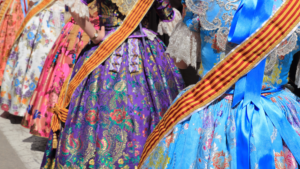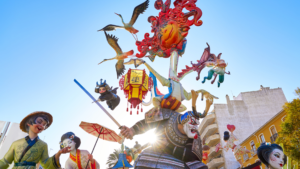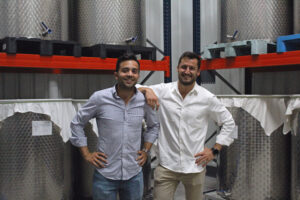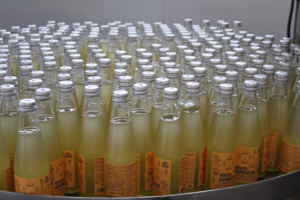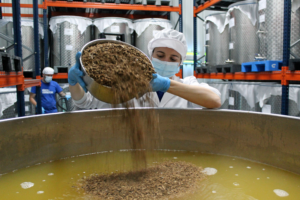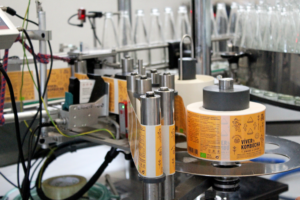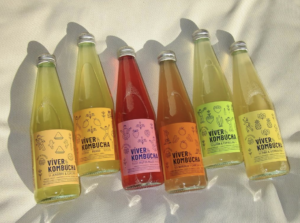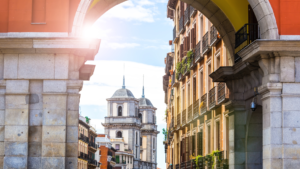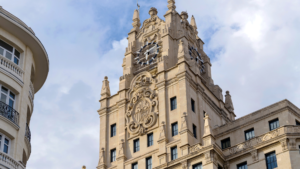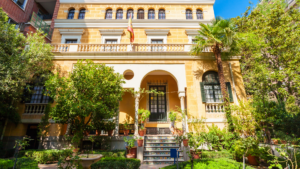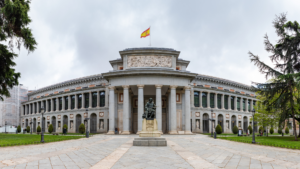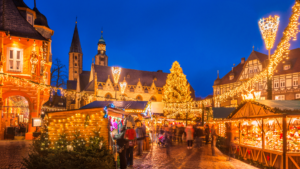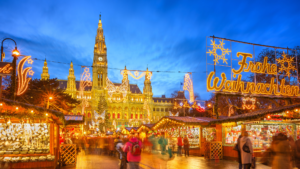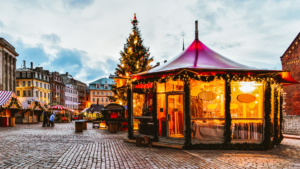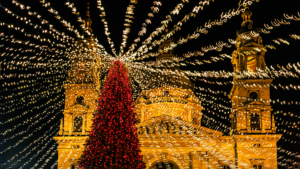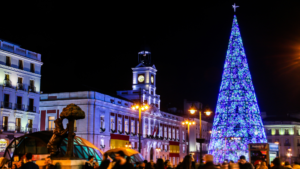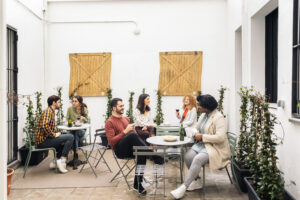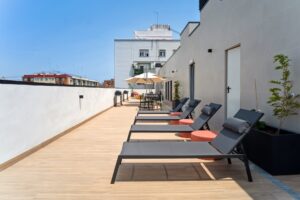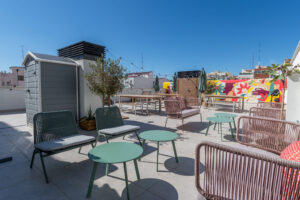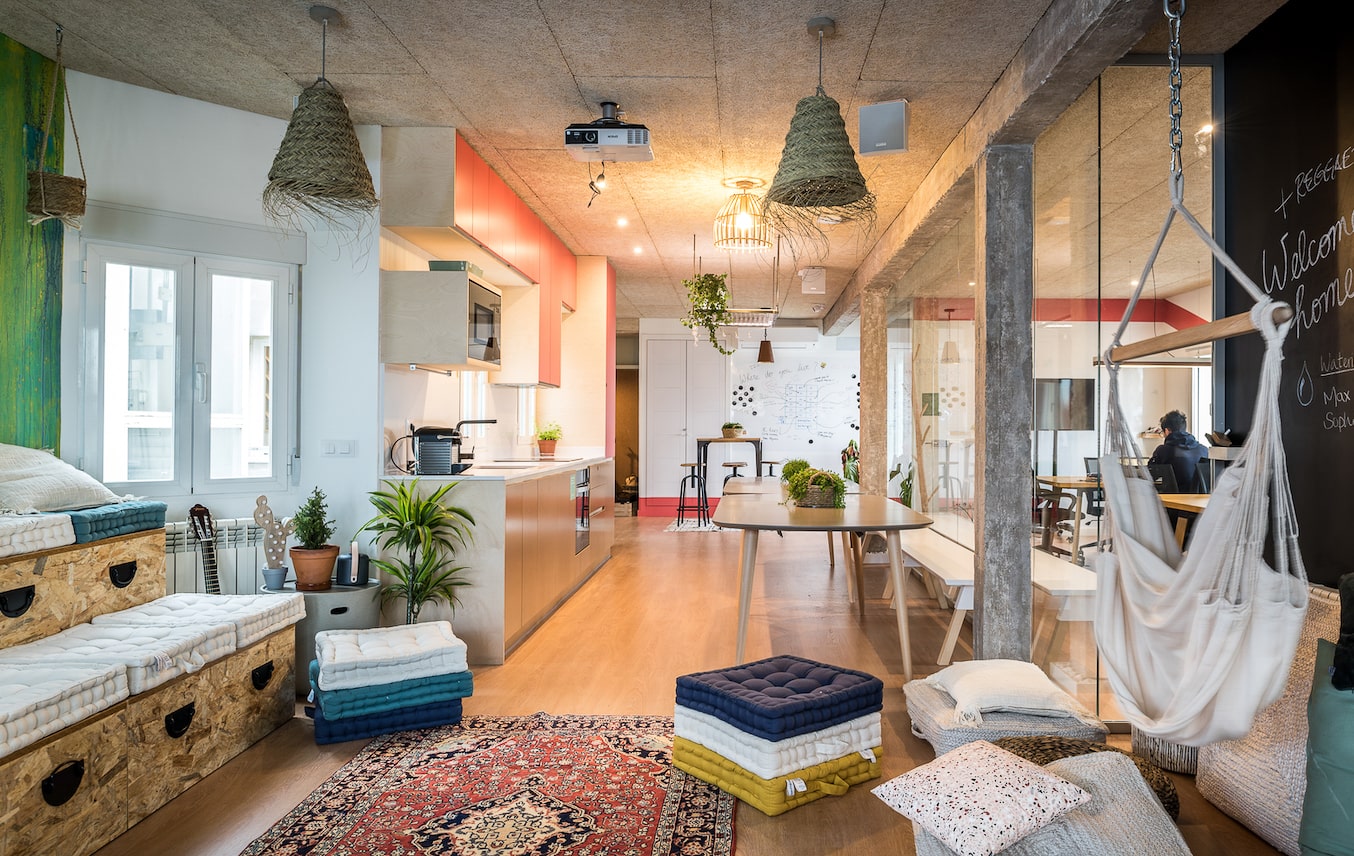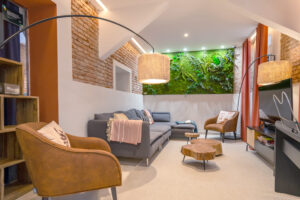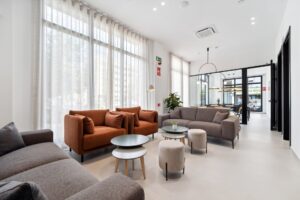Discover the Barrio de Salamanca!
Madrid is a city full of life, cultural richness and neighborhoods….MANY, many neighborhoods. It can be difficult to know exactly where to start when exploring the array of diverse barrios in Madrid, but don’t worry – we can steer you in the right direction.
Avenida América, found within the famous Salamanca district, is a standout neighborhood that is definitely worth exploring. Imagine delicious dining options, bustling shopping streets, lively bars and significant historical sites – what more could you need? It is a well-connected area and an ideal starting point for those looking to dive into the authentic cultural fabric of Madrid.
Not to mention, it is the neighborhood of our Avenida América, Madrid Coliving Space!
Let’s take a closer look at the best things to do in Avenida América and the vibrant barrio de Salamanca.
🍽️ Restaurants in Avenida América and Barrio de Salamanca
The barrio de Salamanca offers a rich diversity of culinary experiences that cater to diverse tastes and budgets. From high-end gourmet restaurants to cozy, budget-friendly eateries, there is a little something for everyone.
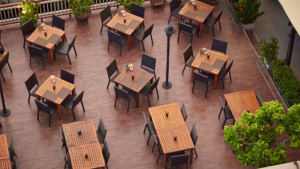
High Budget Restaurants
Carbon Negro: Carbon Negro is a great place for sophisticated dining, and is especially celebrated for its grilled specialties. The ambiance is chic, with soft lighting that enhances the dining experience. You can enjoy Spanish classics like jamón ibérico and pisto manchego, plus explore their extensive bar, wine, and cocktail menu.
Mano de Santa: This restaurant has a dynamic menu with lots of global influences. The interior of Mano de Santa is stunning and elegant, perfect for indulging or celebrating a special occasion. The menu offers shared plates, fish, meat, and desserts, with a few highlights being their delicious rice wok and eggplant empanadas.
El Cañadio: Known for its creative tapas and main courses, El Cañadio offers a blend of contemporary and classic flavors. A Michelin-recognized restaurant in 2023, it’s ideal for adventurous eaters interested in dishes like steak tartar, cow tail, and leek and shrimp pie.
Medium Budget Restaurants
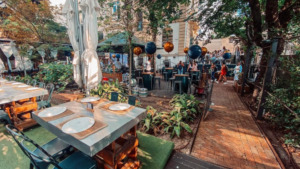
Santerra: Santerra features a casual bar on the first floor (no reservations needed), with a Michelin-starred experience downstairs. The menu changes seasonally, offering traditional dishes with experimental flavors. A few standouts include the artisanal jamón ibérico croquette and wild rabbit rice.
La Raquetista en la Habana: La Raquetista offers a fusion of Cuban and Spanish flavors in a vibrant atmosphere. Enjoy traditional dishes like torreznos (a type of fried bacon) and buffalo steak tartare. It’s a top choice for food lovers, with a large wine cellar and unique recipes.
Casa Vito: Casa Vito specializes in Italian cuisine, serving authentic pasta and pizza in a cozy, authentic setting. The menu features dishes like gnocchi with gorgonzola and orecchiette, complemented by a comprehensive wine selection.
Cazorla: A top Andalusian tavern in Madrid, Cazorla offers an extensive array of Spanish tapas. It’s the perfect spot for sharing dishes and enjoying classics like jamón and huevos rotos.
Cilindro: This Peruvian restaurant stands out for its innovative cuisine, featuring dishes like shrimp causa and oxtail bao. It’s famous for its use of traditional wood ovens and homemade sauces. If you are a fan of Peruvian cuisine, Cilindro is definitely the place for you.
Warehouse: Warehouse is regarded for its enchanting garden setting and farm-to-table Spanish cuisine. The open garden creates a magical environment, ideal for enjoying dishes like morucha sirloin steak and catxopo (veal fillets). This restuarant is a MUST visit!
Kippu: Offering a taste of Japan in Madrid, Kippu is known for its fresh sushi and Japanese specialties. The restaurant features a street market ambiance, perfect for a culinary journey to across the world.
Low Budget Restaurants

Sumo; Diego de León: An all-you-can-eat Chinese restaurant offering a vast array of dishes, including nigiris, makis, and rolls. Sumo is ideal for a hearty meal at an affordable price.
Makami; Diego de León: Specializing in delectable ramen, Makami is a cozy spot for casual dining. Their menu features various ramen dishes, gyozas, bao, and tacos.
La Mordida; Diego de León: Mexican restaurant La Mordida brings vibrant flavors to Madrid. Enjoy Mexican classics like nachos, chipotle chicken, and huevos rancheros, along with special events like tequila tastings and mariachi nights.
Pizza Natura: This restaurant is known for their artisanal pizza with unique dough ingredients like mijo and quinoa. Pizza Natura offers a healthy dining experience with vegan and gluten-free options as well.
🛍️ Shopping in Avenida América
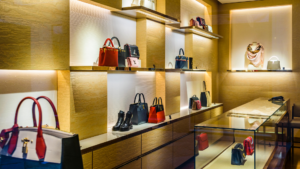
Calle Ortega y Gasset is the epitome of luxury, offering an array of high-end boutiques and designer stores. This street is synonymous with exclusivity and sophistication, where shoppers can find the latest trends from international fashion houses. The elegant storefronts and upscale standards make it a destination for those seeking premium quality, and a great place for a long afternoon stroll.
The small shops on Diego de León street offer a more intimate and personalized shopping experience. Here, shoppers can find unique and trendy items that cater to a variety of tastes. These shops are perfect for those who seek individuality and style without the high-end price tag.
If you’re on the hunt for your classic, go-to stores, head to Calle Goya. This area is home to popular brands like Zara and Parfois, offering a diverse mix of fashion, accessories, and more. It’s another great street to find the new styles without breaking the bank.
🍸 Bars in Avenida América
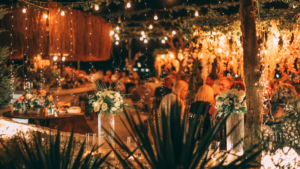
In the barrio de Salamanca, just like in the rest of Spain, the bar scene is essential. Grab a beer, order some tapas, and get ready to kick back and relax.
Terrazas along Juan Bravo Street
Juan Bravo Street is lined with delightful terraces, which create the perfect spot for a leisurely drink. This is the ideal place to bask in the sunlight and immerse yourself in the lively neighborhood. For those unsure where to start, here are two excellent recommendations:
- Salitre: renowned for its exquisite tapas and live concert sessions. The bar has a dark, luxurious interior with a classic tavern vibe, complementing its extensive menu of wines, beers, and cocktails.
- La Barra de la Bien Tirada: a modern cervecería (beer house) that blends Mediterranean influences with informal yet high-quality service. This bar is ideal for casual meetups or after-work gatherings. Its menu ranges from small bites and breakfast options to larger dishes, all served in a bright, sunlit interior.
🏟️ Wizink Center

The barrio de Salamanca isn’t just a hub of modern urban life; it’s filled with important history and notable landmarks. Among its most illustrious attractions is the Wizink Center, a hotspot for cultural and sporting events in Madrid. This venue is a great place to explore the city’s sports and entertainment scene.
The Estadio Wizink Center was first constructed and inaugurated on 1960, originally known as the the “Palacio de Deportes de la Comunidad de Madrid.” The versatile venue was rebuilt and redesigned following a fire in 2001. Now, the Wizink boasts state-of-the-art facilities for hosting a wide range of events, including concerts, basketball games, and more. Its architectural beauty and historical significance make it a must-visit. The center not only serves as a hub for entertainment but also reflects Madrid’s commitment to fostering a vibrant cultural scene.
Want to read more about Madrid?
Photo Credits:
- Photo 1: Canva Free Media License
- Photo 2: Warehouse Madrid Instagram – see original post
- Photo 3: Sumo Instagram – see original post
- Photo 4: Canva Free Media License
- Photo 5: Canva Free Media License
- Photo 6: Canva Free Media License

